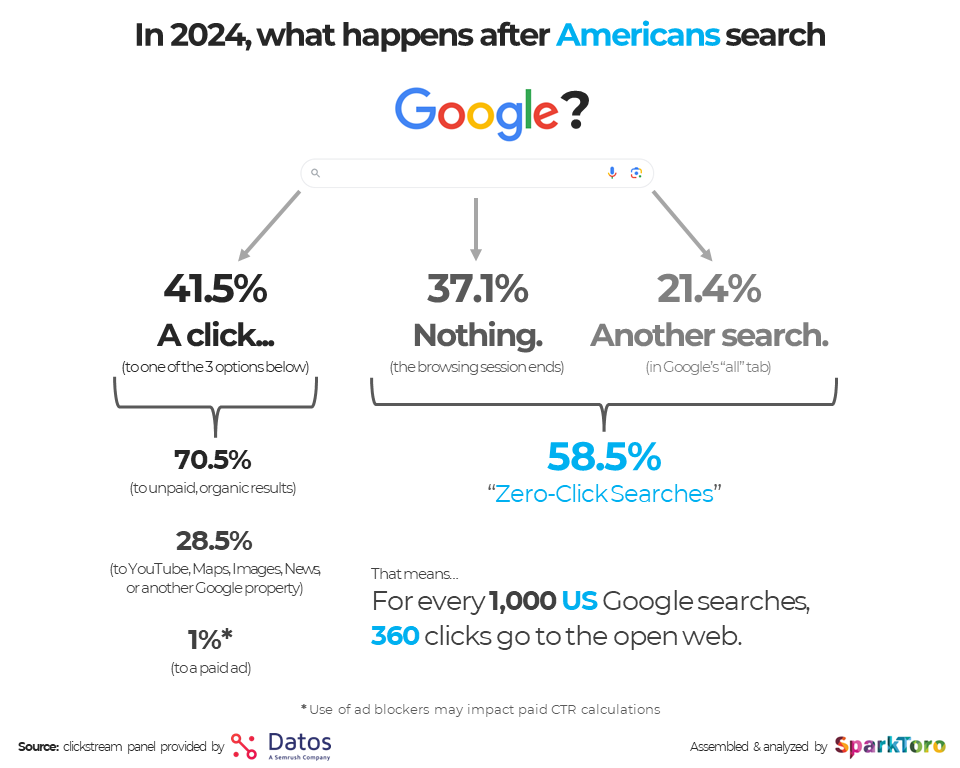.png)
GEO Audits: The Overlooked Step to Future-Proof Your Website
Key takeaways
Less than five years ago, finding answers online meant typing a query into Google and scrolling through pages of blue links. But now, Google’s AI mode gives you a detailed overview in an eye-scroll and saves you the stress.
And it’s not just Google AI leading the way. Platforms like ChatGPT and Perplexity are now the first stop for many users. Even integrated assistants such as WhatsApp GPT are rapidly becoming part of daily search habits. This shift is pushing traditional results into the sidelines while setting off a race for Generative Engine Optimization (GEO).
However, GEO just like SEO, needs to be audited. You need to know what’s working for your website, what’s not, and what fixes you can bring in to scale your visibility on generative engines.
In this article, we’ll share why GEO auditing matters and the key components of a complete audit to future-proof your website for AI search visibility.
Why GEO Audits Matter Now
According to a report from SparkToro, 52.5% of all Google searches end in no clicks. This is also called zero-click search. In case you’re wondering why, another study by AWR shows that AI overviews take the first page in over 12.7% of US Google SERPs. So, you guessed right. Some people just view the overviews and close their tabs without clicking.

Reports also show a growing usage of AI search tools as alternatives for information search. Users send over 2.5 billion prompts per day on ChatGPT, and the platform currently ranks as the 5th most-visited website.
Now here’s the catch:
GEO is becoming like SEO
As more people adopt generative engines in place of traditional search, the large language models (LLMs) behind them are also continuously evolving to meet the growing demands. This means the GEO strategies that worked a few months ago might not move the needle today.
That’s more or less similar to how SEO works—different algorithm changes to make search more user-friendly.
For instance, Google’s AI mode now implements keyword variations, deep anchor-based keywords, and multimodal content formats to provide relevant overviews to its users. That’s a shift from pure contextual pull-up based on available data.
Initial implementations are often static
Most GEO strategies are based on the current AI model. Once the model changes, everything else follows. A perfect example is the difference in how GPT-3.5 reasons and pulls up data compared to how GPT-4 does the same.
So, whatever optimization strategy you implement today might be too static and not necessarily be relevant for the next generation of AI models powering generative search. Auditing helps you stay aligned with these changes instead of relying on a one-time strategy.
How GEO Audits Differ from Traditional SEO Audits
Traditional SEO audits primarily focus on issues like crawlability, indexing, keyword density, backlinks, and the technical health of your website. This is where you employ keyword research tools to understand what your audience is looking for and how you can meet them at their point of need. The end goal is to help you appear in traditional search results.
- Focus: Crawlability, indexing, keyword density, backlinks, and technical health.
- Handling keywords: Density, placement, and matching.
- Content structure: Optimized headings, keyword inclusion, and meta tags.
- User intent: Matches content to search words.
- Goal: Appear and rank high on traditional search results.
On the contrary, GEO audits prioritize structuring, semantic distinctions, and entity mapping within content, evaluating if your website demonstrates enough expertise or credibility to be referenced, and intent. The end goal is to help you appear in AI overviews and generative engine results.
- Focus: Semantic clarity, entity mapping, structured answers, and authority signals.
- Handling keywords: Understanding entities, relationships, and content around queries.
- Content structure: Structured data, schema markup, and question-answer formats.
- User intent: Matches content to intent, context, and conversational queries.
- Goal: Appear in AI-generated answers, overviews, and generative engine output.
While GEO seems entirely different from SEO, they overlap in some areas. For example, both emphasize Google’s E-E-A-T (Expertise, Experience, Authority, and Trustworthiness) as essential for visibility or referencing.
Besides, your content needs to be indexable so AI engines can pull it from the internet. So SEO audit remains foundational to an effective GEO audit.
6 Key Components of a GEO Audit
A 2024 Gartner report predicts a 25% drop in queries going to traditional search engines and a redirection of these queries to AI interfaces. Auditing positions you to take advantage of this incoming traffic share.
For your audit to be effective, here are five areas you should pay attention to:
1. Content Structure & Semantic Clarity
Content is the core of your GEO. But poor content structure complicates AI crawlability and makes it difficult to understand your content flow, even if what you wrote is top-notch. At the start of your audit, check the following:
- Hierarchy; Check if each pages is broken down into H1s, H2s, H3s, etc for topical flow and crawlable hierarchy
- Formatting: Confirm your content is formatted into structured data like FAQS, summaries, short-answer questions, tables, and lists.
If not, fix them all.
Semantic clarity, similar to content structure, is crucial for helping AI grasp the meaning and intent behind your texts. When auditing:
- Check for ambiguity and complex sentences. This includes word alternatives that are too inadequate for the layman. Unnecessarily long sentences or paragraphs can look confusing.
- Dig into terms that look similar but provide different context depending on use, spelling, tone, and capitalization, and ensure they are appropriately used.
- Look for areas where contextually relevant synonyms can be used together without confusing both AI and your page readers. For instance, the terms “car” and “automobile” mean almost the same thing and can be interchanged depending on the intent.
Note that excessive jargon makes it difficult for AI to extract relevant information and reference it to users. Your audit should focus on making the overall content straightforward and clear.
2. Entity Mapping & Knowledge Graph Integration
Entity mapping refers to how AI engines understand, organize, and connect entities. An entity can be a person, organization, location, building, concept, or even product.
Take a business like Bates Electric, for example. They need their website to signal to search and AI engines that they are the go-to local electrician experts in St. Louis and the surrounding Missouri area. This means creating clear entity relationships such as:
- Business Name: Bates Electric
- Category: Electrical Services
- Location: St. Louis, Missouri
- Service Area: Surrounding Missouri cities
- Services Offered: Residential wiring, commercial electrical work, emergency repairs
Without these strong entity signals, AI might fail to associate Bates with “local electrician” or locational queries. This, in turn, leads to missed opportunities.
As part of your audit, to ensure correct entity mapping and knowledge graph integration, do the following:
- Ensure that your NAPs (Name, Address, Phone) are consistent across all channels, including the website, Google Business Profile, directories, etc.
- Confirm implementation of schema.org markup (LocalBusiness, Organization, Service) to explicitly define entity details such as category, location, and service offerings.
- Review the internal connections between link-related services and locations using clear anchor text. They help build a strong entity graph within your site.
Of course, a knowledge graph also feeds off your internet popularity. The more mentions you earn, the more solid your graph and the easier it is for AI systems to understand your content with respect to the user queries.
3. Question-Answer Coverage
Most user queries are phrased as questions, and AI systems prioritize sources that adopt a question-and-answer structure. For example, a California-based businessman struggling with multiple crippling debts and looking to merge them into a single secure loan might ask ChatGPT, “How can I consolidate all my debts?”
- ChatGPT’s engine parses the question to understand user intent, location, and needs.
- Then it looks for valuable resources covering “California debt consolidation.” Google’s AI mode turns these singular keywords into several variations and looks for pages that match up
- Interestingly, GPT does not focus on resources answering “Hows” only. It also looks for the Why, When, Where, Cost, and other tangible angles based on user intent.
- Once ChatGPT finds a source answering the question in detail and with credibility, the engine pulls it up with some context and a source for further research.
So, if you’re going to show up on AI engines for debt consolidation or any other possible query your brand serves, your content must answer most of the question-pattern queries and variations possible.
When auditing your website for question-answer coverage:
- First, check for the primary and secondary queries you want your website to rank for. Tools like SEMrush and Ahrefs can help with that.
- Go through your existing content and pages to ensure they follow question-answer formats rather than a continuous block of text. This includes your headings, too.
- Look for high-value keywords and intent-based questions on your page and create FAQs sections for them if they are not already available.
You can employ topic clustering to address each question variation as a separate topic, in addition to adding them to the FAQs section of your main page.
4. Citations & External Validation
Much like SEO, GEO also counts citations as signals for credibility. When you make claims about GEO becoming mainstream, you have to provide in-text citations confirming it. This tells AI engines you know what you’re talking about, and thus your content can be used to provide accurate opinions to users.
When auditing existing citations:
- Look for stats or attributions more than three years old and replace them with the most updated ones.
- Test each hyperlink to eliminate dead ends or broken links
- Ensure each citation has a handle text or statement describing the source of the stats or resource you’re citing. “A recent report by Statista shows that…”
- Validate your references using schema.org’s structured data for references. Helps AI recognize authentic sources and parse you for higher visibility
External validations matter too. The more mentions your website has, the more likely it is to appear in search results. To simplify, mentions from brands with industry authority inform AI that your content is relevant and credible. They are like a vote of confidence and trustworthiness.
- You can use brand monitoring tools to track your mentions and devise a new strategy to increase your online visibility.
- Use SEO tools like SEMrush to track backlinks anchored to your brand name.
Of course, you should try to take down your name from negative mentions. This is where good PR comes in. Negative reviews also hurt your credibility and can offset all the external validations you have or make you show up for the “top X most untrusted sources.”
5. Experience & Authority Signals
Remember, we said much of GEO and SEO overlap. That’s because both AI and traditional search engines leverage the experience and authority of a website to rate its quality, whether it’s a good fit for recommendations.
To ensure sturdy experience and authority signals are in place, audit your website for the following:
- Implementation of E-E-A-T (Expertise, Experience, Authority, and Trustworthiness) for all content types
- Review backlink quality using SEMrush or Ahrefs. Good backlinks from authoritative websites like Forbes or PR mentions are seen as strong signals.
- Presence of author bios on relevant pages
- Proper placements of testimonials, genuine reviews, and case studies
Non-technical ways to boost authority signals include launching brand podcasts, organizing value-filled digital or hybrid events, engaging in press releases for key updates or launches, and optimizing your social profiles with success stories.
6. LLMs.txt audit for visibility
LLMs.txt is a file containing directives on how AI engines like ChatGPT and Gemini should understand and interpret your website content. It’s, however, important to they are highly experimental at the moment and are yet to be a standard visibility rule compared to robots.txt.
Of course, proper use will make it easy for AI engines to engage your website. So:
- Go through your website’s root directory to locate the llms.txt page. E.g. https://example.com/llms.txt. If not, add it to your root domain.
- Ensure your llms.txt file contains brand title, description, the entity labels we’ve discussed before, and special instructions to enhance crawlability.
- Look out for excessive code jargons to avoid file complexity. Simple descriptions will do.
See how our llms.txt looks like.
You can also state canonical domains and social profiles for better referencing opportunities.
Conclusion
AI search is here to stay. And optimizing once is not enough. You need to constantly audit your website’s GEO strategies to keep up as AI models become smarter and stronger. To do that, start with content structure and semantics. Your content should guide AI engines through proper hierarchical implementations and provide clear contexts.
Entity mapping and knowledge graph integration must be in place to eliminate AI hallucinations and mixups. Ensure your content adopts a question-and-answer pattern in addressing key queries. Audit existing citations to meet quality and remove dead references. Lastly, check for E-E-A-T implementations and review your backlink health as they contribute to authority signals.






.svg)







.png)
.png)


-min.png)

-min.png)


.png)








.svg)

.png)
.png)
.webp)
.svg)

